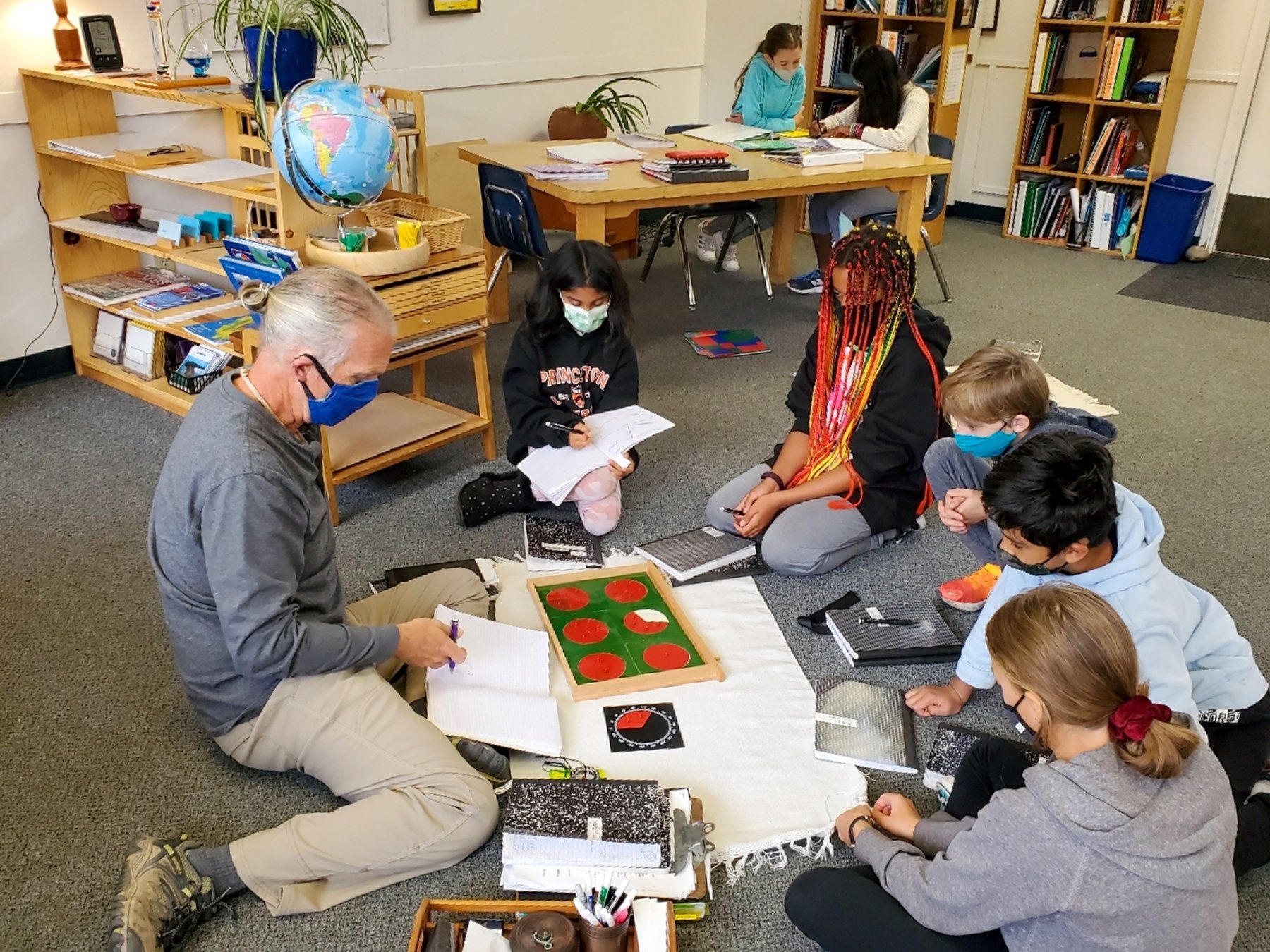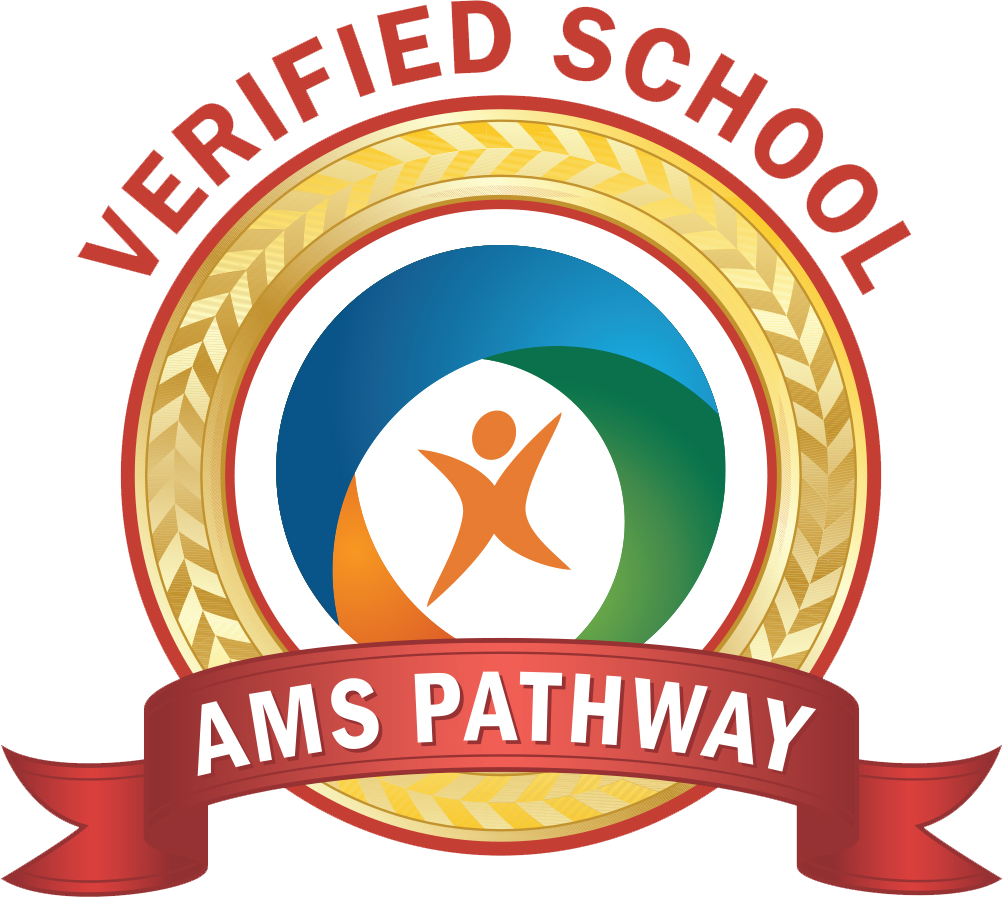Materials Highlight: The Fraction Insets

The Fraction Insets material is a beautiful set that includes ten green metal frames with red fractions from the whole to tenths. Each piece has a small knob allowing children to move them easily.
Prior to an introduction to fractions, the child has had extensive instruction and experiences with numeration being based on the unit. One unit (or one, one whole, etc.) has been the basis by which they have learned to count, skip count, add, and subtract. As the child enters lower elementary, they are ready to learn how to divide a unit.
An Introduction
While the most commonly used and popular fraction insets are circular, there are also triangular and square fraction insets. It’s important for guides to refer to this at times so the children have an understanding that anything may be divided, not just circles.
The first time children use the insets they are encouraged to observe what they notice, and they develop the concept that each inset is a family of sorts. “These are the thirds, these are the sixths, etc.”
The guide will make a point to use intentional language to create a firm basis in understanding: “This circle is divided into four equal parts. We call them fourths.” The guide will write out “fourths” as well as “/4” as children are able to verbally express their understanding.
The Numerator
During the course of this lesson, the guide doesn’t actually use the term numerator just yet. What is emphasized is that while the children previously learned the family names of each inset, the focus will now shift to individual pieces. Examples will be shown using the material, and both verbal and written expressions will accompany each.
For example: “This is one third, or ⅓.” “This is four fifths, or ⅘.” This may be the end of the lesson, or, if the children seem to grasp the concept quickly and easily, it may be combined with the third presentation.
The Third Presentation
The third presentation is essentially a culminating review of what has been covered so far. The children may take turns matching labels with fractions to show their understanding. The critical piece is that the guide will now formally name the numerator and denominator.
There is a lot of opportunity for practice and extension work at this point. Children may trace and label fractions, make booklets or charts, work together to match labels, and so on.This work typically happens during the first year of lower elementary.
Equivalence
This is an exciting lesson for children. Once they have a firm grasp on naming fractions, the guide will again sit them down in a small group. The one whole circle will be removed from its frame and the two halves will be put in its place. The guide will show the children how one whole is equal to two halves. This will be repeated with similar equivalencies: 3/3=1, 4/4=1, etc.
Next, smaller equivalencies will be discovered. The guide will try and fit a piece into a number of different spots, proving where it does and does not fit. Children will learn several simple equivalencies, such as 2/6=1/3 .
As with the previous skill, there is plenty of opportunity for exploration and extension in regard to equivalencies. This is arguably the most important fractions skill of lower elementary.
Operations with Fraction
Once a child has a firm grasp of fraction basics, they are ready to learn operations. This will likely begin in lower elementary and extend into upper elementary, and are taught initially using the fraction insets material. Another material often used is called the fraction box, which includes small plastic replicas of the red circular fraction pieces. Skills include:
● Addition and subtraction using the same denominator
● Multiplying fractions by whole numbers
● Dividing fractions by whole numbers
● Addition with different denominators
● Addition with more than two addends
● Subtracting with different denominators
● Multiplying whole numbers by fractions
● Multiplying fractions by other fractions
● Dividing whole numbers by fractions
● Dividing fractions by fractions
Moving to Abstraction
Use of materials when teaching fractions is critical; at Casa, we believe Montessori students excel later in life with more complicated math concepts because they have such a strong foundation in the basics. Rather than memorizing rote procedures they are physically manipulating numbers with their hands, giving them a deeper understanding of why we do what we do.
One cannot rely on materials forever, though, and there comes a time when the child is prepared to move onto abstraction.
This is often achieved by the guide showing an operation with the material again while also writing out the pencil and paper process. In fact, children will often come to this learning independently. They are able to make the connections as they master skills. If not, the guide is there to show them the way. There comes a point during the upper elementary years when a child no longer needs to rely on the materials to determine the answer to a problem. In fact, using the materials becomes cumbersome, and they are eager to put them behind.
Want to learn more? We encourage you to set up a time to observe. Reading about Montessori education is important and enlightening, but the very best way to understand is to see it for yourself!

